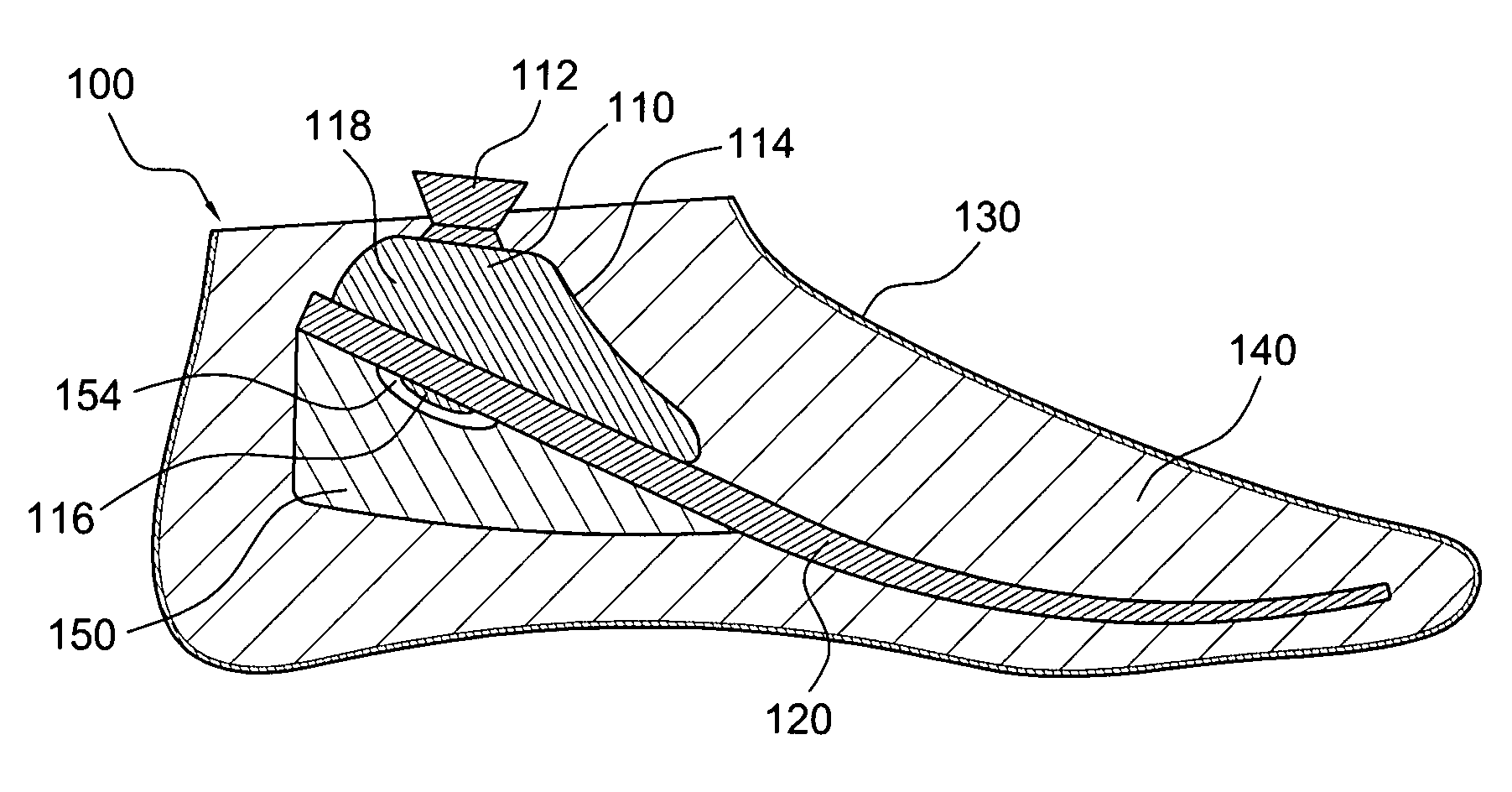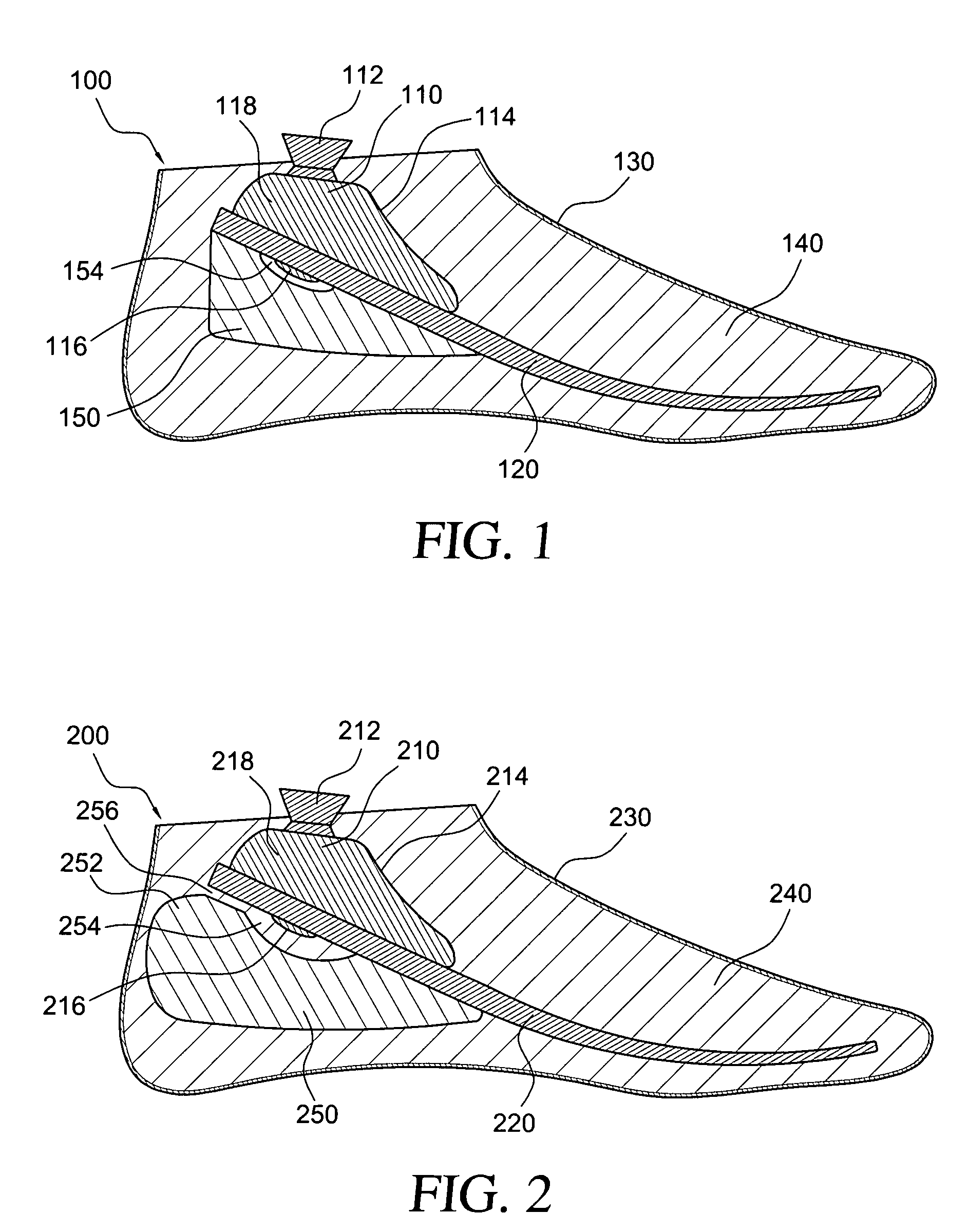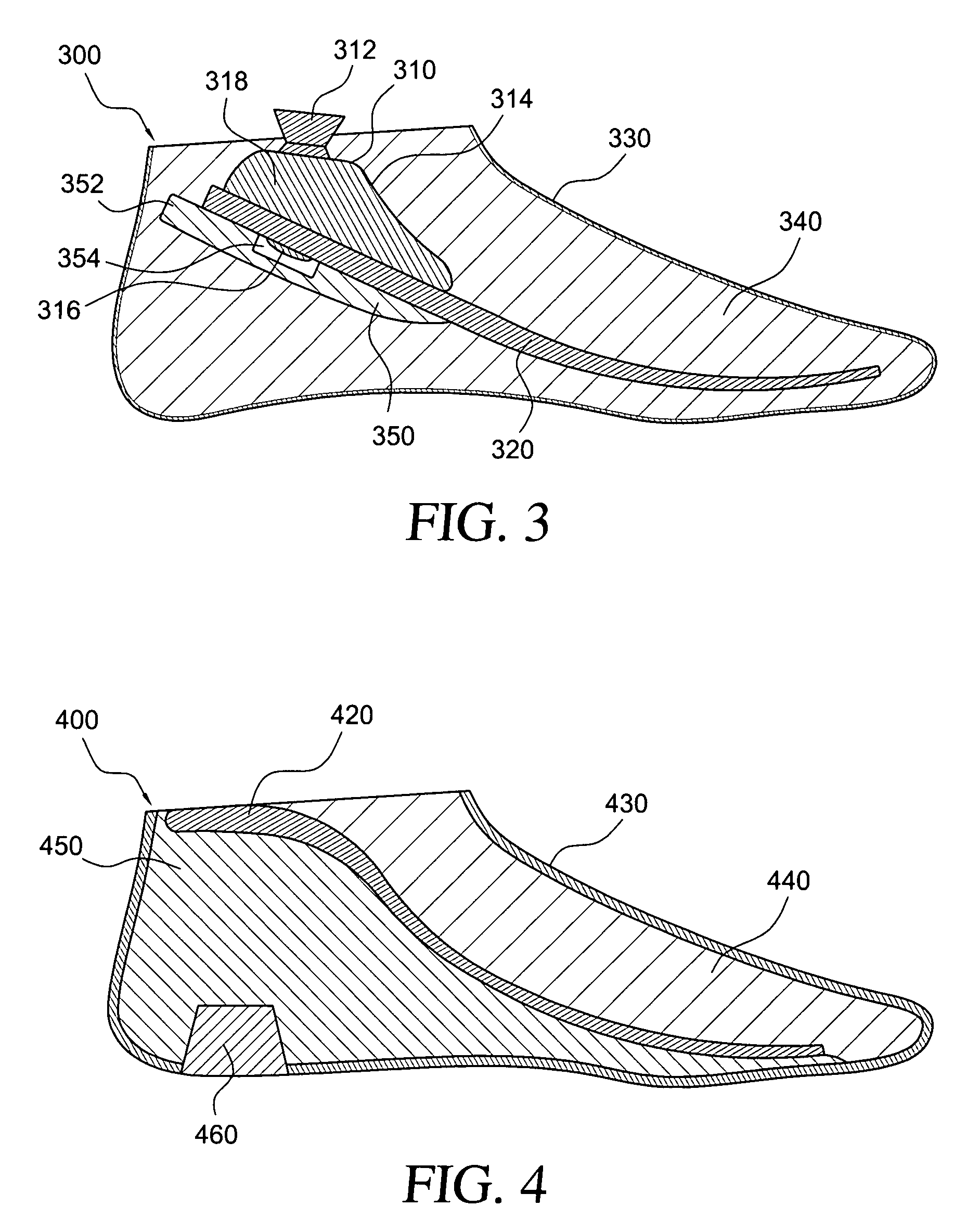Prosthetic foot
a technology for applied in the field of prosthetic feet and footplates, can solve the problems of large complexity of current designs, and high cost of many current prosthetic feet, and achieve the effect of improving prosthetic feet and low cos
- Summary
- Abstract
- Description
- Claims
- Application Information
AI Technical Summary
Benefits of technology
Problems solved by technology
Method used
Image
Examples
first embodiment
B. Detailed Description of a First Embodiment
[0034]A first embodiment of a prosthetic foot 100 is shown in FIG. 1. The prosthetic foot 100 is constructed around a resilient footplate 120. The footplate 120 is appropriately shaped and configured to provide load bearing support and prosthetic foot characteristics permitting smooth ambulation.
[0035]Thus, the footplate 120 may be substantially planar, or may include one or more slight or gradual curves. The footplate 120 may include at least one recessed portion or cut out (not shown) in the anterior portion of the footplate 120 in order to provide what is known in the art as a “sandal toe,” which allows a user to wear conventional toe strap sandals on the prosthetic foot, in addition to traditional footwear that covers the entire foot.
[0036]In an exemplary configuration, the footplate 120 may be inclined at an angle of twenty degrees with respect to the supporting surface or ground. Of course, any suitable orientation that provides the...
fourth embodiment
D. Detailed Description of a Fourth Embodiment
[0074]A fourth embodiment of a prosthetic foot 400 is shown in FIG. 4. A footplate 420, of any type previously discussed herein, is provided embedded between a first foam element 440 and a second foam element 450. The first and second foam elements 440, 450 may be made from materials previously discussed and may have the same density and stiffness. For example, the first and second foam elements 440, 450 may be made from an ethylene vinyl acetate (EVA) closed or open cell foam having a stiffness, as measured by the hardness, in the range of 45 to 55 on the Shore A scale.
[0075]Alternatively, the second foam element 450 may have a higher density, and thus a higher stiffness than the density of the first foam element 440. Both the first and second foam elements 440, 450 may be separately molded by known techniques and bonded to the footplate 420. Of course, the first and second foam elements 440, 450 may also be simultaneously molded integr...
PUM
 Login to View More
Login to View More Abstract
Description
Claims
Application Information
 Login to View More
Login to View More - R&D
- Intellectual Property
- Life Sciences
- Materials
- Tech Scout
- Unparalleled Data Quality
- Higher Quality Content
- 60% Fewer Hallucinations
Browse by: Latest US Patents, China's latest patents, Technical Efficacy Thesaurus, Application Domain, Technology Topic, Popular Technical Reports.
© 2025 PatSnap. All rights reserved.Legal|Privacy policy|Modern Slavery Act Transparency Statement|Sitemap|About US| Contact US: help@patsnap.com



